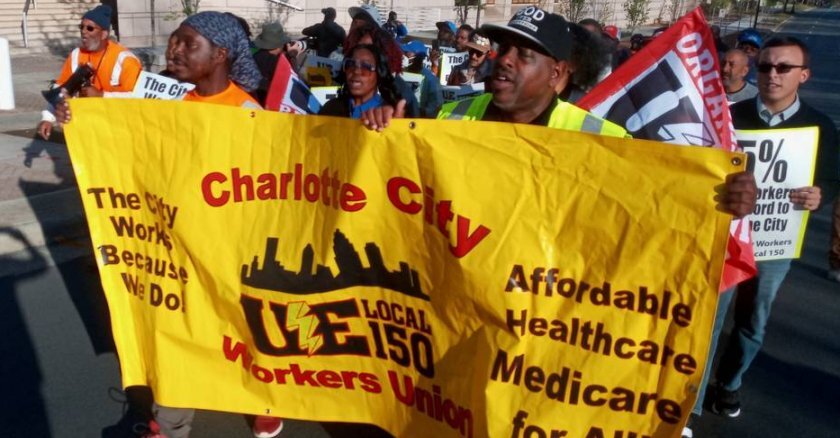When it pushes them over the "benefits cliff."
It is a workplace problem employers may not even be aware they have, but it is becoming more of an issue in today's tight labor market, where employees often are being asked to work longer hours by companies that are struggling to fill open jobs.
If employees' incomes rise beyond a certain point, they risk losing eligibility for public assistance benefits, like a housing subsidy. And if the pay hikes they receive aren't enough to compensate for the lost benefits, they end up in a financial hole.
That forces employees to make a tough, pragmatic decision: Turn down the promotion or raise, to avoid losing the benefits. Their employer may not even know the true reason employees reject promotions and raises.
"People are very rational," said Dottie Gallagher, president and CEO of the Buffalo Niagara Partnership. "They look at this and they say, 'I can't take that overtime because I'll hit that cliff, and I'll lose food for my family, or I'll lose my housing, or I'll lose something.'
"So they often opt out of opportunities, which, in the long run, would benefit their families tremendously," Gallagher said.
The benefits cliff has ripple effects in the economy:
—Lower-income employees don't take jobs that should make them better off financially, leaving them stuck where they are instead of climbing the career ladder.
—Employers miss out on promoting good talent, at a time when they're struggling to find and keep good workers.
—There's an ongoing cost to taxpayers, as employees continue to receive public benefits that they cannot afford to live without.
It is not a new problem, but it is one that the business community and government partners are trying to build awareness of, and get more creative about addressing.
In a recent survey of Partnership members, nearly half of the respondents reported having lower-wage employees often or sometimes turn down promotions or more work hours, Gallagher said. Employees wary of approaching the benefits cliff might also call in sick more frequently, when they are actually healthy.
Employers mistakenly assume that workers really like the job they are already in, or are simply uninterested in working additional hours, Gallagher said.
In reality, those employees have probably done the math and figured out keeping their income below a certain level is the only way to protect benefits such as child care subsidies, housing vouchers and food stamps. The same rationale can apply to workers who are making financial judgments about coming off the sidelines into the workforce.
In short, the extra income those workers might earn by taking a job or working longer hours could end up costing them much more in lost public assistance benefits.
Meanwhile, employers are struggling to find workers to hire amid a tight job market.
The Buffalo Niagara region's unemployment rate in September was a more than three-decade low of 3.3%, according to state Labor Department data. The number of people in the region who were seeking jobs but couldn't find one was just 18,200 in September, tying a three-decade record low that was first set in December.
It is a similar story nationally. Federal labor statistics show there are almost two job openings for every unemployed person in the country. While employers are scrambling to fill openings, workers are evaluating the true impact that some jobs would have on their finances.
Research shows employees with two or more children, making $23 an hour or less, are at the greatest risk of going over the benefits cliff, Gallagher said.
"It impacts certain occupations more frequently, and people of color are more likely to be working in these occupations than their white counterparts," she said.
The public benefits make a significant difference when workers' children are young, she said.
"But when their kids age out of the system, the parents are then in a really bad way, because a lot of those supports have a very rapid decline," she added
Identifying the benefits cliff problem is one thing; finding ways to overcome that barrier is another.
Earlier this year, Erie County and its partners kicked off a two-year pilot program that provides participating workers with financial supports they need while making the transition to higher-paying jobs and self sufficiency. The idea is to prevent the benefits cliff from getting in the way of their career progress.
And the Partnership teamed up with the Federal Reserve Bank of Atlanta this year to launch online benefits cliff calculators. The digital tools allow users to identify if an employee is at risk of going over the benefits cliff, by plugging in details about compensation and public assistance. The calculators can shift the discussion about the economic impact from the hypothetical to the real world.
"It's very clear that this is an excellent tool that every employer can use at some point," said Scott Bieler, CEO of West Herr Automotive Group, which has 2,800 employees across its multitude of dealerships.
That starts with creating awareness among businesses and workers that the free calculators are available.
Ensuring employees don't miss out on raises or promotions due to the benefits cliff is part of a bigger-picture workforce issue employers are facing.
"Everybody's trying to make sure they retain good employees, and I think everybody's actively looking at people's wages more frequently than a few years ago," Bieler said. "Having this tool to make sure we're not affecting them in a negative way is a good thing."
What if an employer runs the numbers and determines a raise would cause a worker to lose public assistance benefits? Employers have to find ways around that economic barrier, perhaps by structuring employees' compensation differently, Gallagher said. The solution could come in the form of covering the cost of an employee's transportation, or directly paying a daycare for an employee's child care costs.
But it begins with understanding an employee's financial situation.
"Many people who are receiving some form of assistance are extremely proud, and they don't want their employer to know what benefits they're taking advantage of," Gallagher said.
Employees can meet privately with a human resources official to keep that type of sensitive personal information confidential, said Lisa Catanese, West Herr's human resources manager.
But even if an employer lacks specific information about public assistance a worker receives, the employer can use the calculator to make estimates and assess the impact on a worker's total income, said Elias Ilin, an economist with the Federal Reserve Bank of Atlanta.
Employers can consider other approaches to avoid the benefits cliff, so that it doesn't impede workers' economic mobility, Gallagher said.
"They have to work around this with people they see are really talented," she said. "Instead of putting a person into the next job (after their present job), maybe invest in training that would get them to the job past that, that would get them past the cliff."
Gallagher said the benefits cliff is an issue that will require policy changes at the federal and state levels, so that workers don't put their benefits at risk while working on improving their economic fortunes. Employers have a part to play, too, she said.
"It's incumbent upon us, if we're really going to grow as a region, to really try to take this on," she said.
(c)2022 The Buffalo News (Buffalo, N.Y.) Distributed by Tribune Content Agency, LLC.










